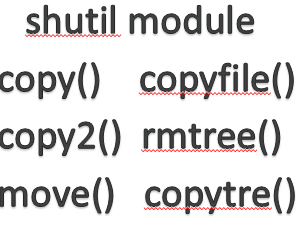.Transpose Operations
transpose
This function permutes the dimension of the given array.
It returns a view wherever possible.
Syntax transpose(arr, axes=None) Parameter arr: Input array. axes: By default, reverse the dimensions, otherwise permute the axes according to the values given.
>>> d=np.array([[1,5,3],[2,5,6]]) >>> d array([[1, 5, 3], [2, 5, 6]]) >>> np.transpose(d,axes=[1,0]) array([[1, 2], [5, 5], [3, 6]]) >>> np.transpose(d,axes=[0,1]) array([[1, 5, 3], [2, 5, 6]])
rollaxis
This function rolls the specified axis backwards until it lies in a specified position.
This function continues to be supported for backward compatibility.
numpy.rollaxis(arr, axis, start) arr-input array axis-Axis to roll backwards. The position of the other axes do not change relative to one another. start-Zero by default leading to the complete roll. Rolls until it reaches the specified position
>>> a = np.ones((3,4,5,6)) >>> np.rollaxis(a, 3, 1).shape (3, 6, 4, 5) >>> np.rollaxis(a, 2).shape (5, 3, 4, 6) >>> np.rollaxis(a, 1, 4).shape (3, 5, 6, 4)
swapaxes
This function interchanges the two axes of an array.
numpy.swapaxes(arr, axis1, axis2) arr: Input array whose axes are to be swapped axis1: An int corresponding to the first axis axis2: An int corresponding to the second axis
>>>a=np.array([[1.5,2,3],[4,5,6]]) >>> a array([[1.5, 2. , 3. ], [4. , 5. , 6. ]]) >>> np.swapaxes(a,0,1) array([[1.5, 4. ], [2. , 5. ], [3. , 6. ]]) >>> a=np.array([[[1.5,2,3],[4,5,6]],[[7,8,9],[10,11,12]]]) >>> a array([[[ 1.5, 2. , 3. ], [ 4. , 5. , 6. ]], [[ 7. , 8. , 9. ], [10. , 11. , 12. ]]]) >>>np.swapaxes(a,2,0) array([[[ 1.5, 7. ], [ 4. , 10. ]], [[ 2. , 8. ], [ 5. , 11. ]], [[ 3. , 9. ], [ 6. , 12. ]]])
moveaxis
Move axes of an array to new positions.
Other axes remain in their original order.
numpy.moveaxis(arr, source, destination) arr: The array whose axes should be reordered. source: Original positions of the axes to move. destination: Destination positions for each of the original axes.
>>> x = np.zeros((3, 4, 5)) >>> np.moveaxis(x, 0, -1).shape (4, 5, 3) >>> np.moveaxis(x, -1, 0).shape (5, 3, 4)
ndarray.T
It is similar to numpy.transpose
This function below to ndarray class.
self is returned if self.ndim < 2
>>> x = np.array([[1,2],[3,4]]) >>> x array([[1, 2], [3, 4]]) >>> x.T array([[1, 3], [2, 4]])

